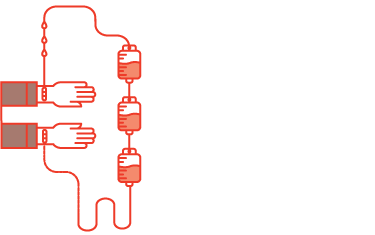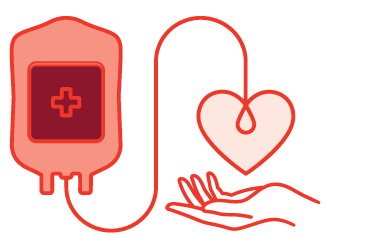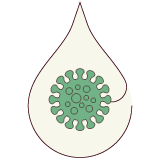Meeting the needs, interests and expectations of our Stakeholders
Engaging, understanding, responding to and meeting the needs of our stakeholders to create value for them and SANBS
The SANBS has always valued the contributions of our diverse stakeholders. Through robust engagement, we empower them to assist us in achieving our goals, mitigating risks and optimising opportunities. Stakeholder surveys are undertaken from time to time. Emphasis on these will increase going forward. The information that follows describes our frequency of engagement with our stakeholders, their needs, interests and expectations, risks and opportunities and how we respond to these. We also provide our assessment of the current relationship against a desired relationship and give details of the status of current engagements with our various stakeholders.
We group our stakeholders as follows:
Employees
Stakeholder Group
SANBS EMPLOYEES
Ongoing engagement
Capitals
iHEALTh
Risks
Materiality Themes
Responsible
Executive Management
Current Relationship
Good
Desired Relationship
Trusted

Needs, interests & expectations
Key Risks
Opportunities
SANBS Response
Status of Current Engagements
BOARD
Stakeholder Group
BOARD
Regular engagement
Capitals
Risks
Materiality Themes
Responsible
CEO & Company Secretary
Current Relationship
Good
Desired Relationship
Trusted

Needs, interests & expectations
Key Risks
Opportunities
SANBS Response
Status of Current Engagements
EMPLOYEES: UNIONS
Stakeholder Group
EMPLOYEES: Unions
Ongoing engagement
Capitals
iHEALTh
Risks
Materiality Themes
Responsible
Chief Human Capital Officer
Current Relationship
Good
Desired Relationship
Trusted

Needs, interests & expectations
Key Risks
Opportunities
SANBS Response
Status of Current Engagements
DONORS: BLOOD DONORS
Stakeholder Group
BLOOD DONORS
Ongoing engagement
Capitals
iHEALTh
Risks
Materiality Themes
Responsible
Executive: Transfusion Donor Services and Marketing
Current Relationship
Trusted
Desired Relationship
Trusted

Needs, interests & expectations
Key Risks
Opportunities
SANBS Response
Status of Current Engagements
DONORS: National Council, Zone Donor Committees, Branch Donor Committees
Stakeholder Group
National Council, Zone Donor Committees, Branch Donor Committees
Periodic engagement
Capitals
iHEALTh
Risks
Materiality Themes
Responsible
Executive: Transfusion Donor Services and Marketing
Current Relationship
Trusted
Desired Relationship
Trusted

Needs, interests & expectations
Key Risks
Opportunities
SANBS Response
Status of Current Engagements
REGULATORS: National Department of Health
Stakeholder Group
NATIONAL DEPARTMENT OF HEALTH
Ongoing engagement
Capitals
iHEALTh
Risks
Materiality Themes
Responsible
Executive Management
Current Relationship
Good
Desired Relationship
Trusted

Needs, interests & expectations
Key Risks
Opportunities
SANBS Response
Status of Current Engagements
REGULATORS: SA National Accreditation System (SANAS)
SA National Health Products Regulatory Authority (SAHPRA) ISO Standards, SABTS
Stakeholder Group
SA National Accreditation System (SANAS)
SA National Health Products Regulatory Authority (SAHPRA) ISO Standards, SABTS
Regular engagement
Capitals
iHEALTh
Risks
Materiality Themes
Responsible
Medical Director
Current Relationship
Good
Desired Relationship
Trusted

Needs, interests & expectations
Key Risks
Opportunities
SANBS Response
Status of Current Engagements
MEDICAL FRATERNITY: Doctors, Nurses, Patients, Medical Aid Schemes
Stakeholder Group
DOCTORS, NURSES, MEDICAL AID SCHEMES
Ongoing engagement
Capitals
iHEALTh
Risks
Materiality Themes
Responsible
Executive Management
Current Relationship
Good
Desired Relationship
Trusted

Needs, interests & expectations
Key Risks
Opportunities
SANBS Response
Status of Current Engagements
SUPPLIERS
Stakeholder Group
VENDOR/SUPPLIERS
Ongoing engagement
Capitals
iHEALTh
Materiality Themes
Responsible
Chief Financial Officer
Current Relationship
Good
Desired Relationship
Trusted

Needs, interests & expectations
Key Risks
Opportunities
SANBS Response
Status of Current Engagements
SA AND INTERNATIONAL BLOOD PARTNERS: Business Partners
Stakeholder Group
Business Partners
Regular engagement
Capitals
iHEALTh
Risks
Materiality Themes
Responsible
Executive Management
Current Relationship
Trusted
Desired Relationship
Trusted

Needs, interests & expectations
Key Risks
Opportunities
SANBS Response
Status of Current Engagements
SA AND INTERNATIONAL BLOOD PARTNERS: Local and International Health and Transfusion Medicine
Stakeholder Group
Local and International Health and Transfusion Medicine
Organisations, e.g.
Regular engagement
Capitals
iHEALTh
Risks
Materiality Themes
Responsible
Executive Management
Current Relationship
trusted
Desired Relationship
Trusted

Needs, interests & expectations
Key Risks
Opportunities
SANBS Response
Status of Current Engagements
Media
Stakeholder Group
MEDIA
Ongoing engagement
impacts society at large
Capitals
iHEALTh
Risks
Materiality Themes
Responsible
Chief Marketing Officer
Current Relationship
Trusted
Desired Relationship
Trusted











